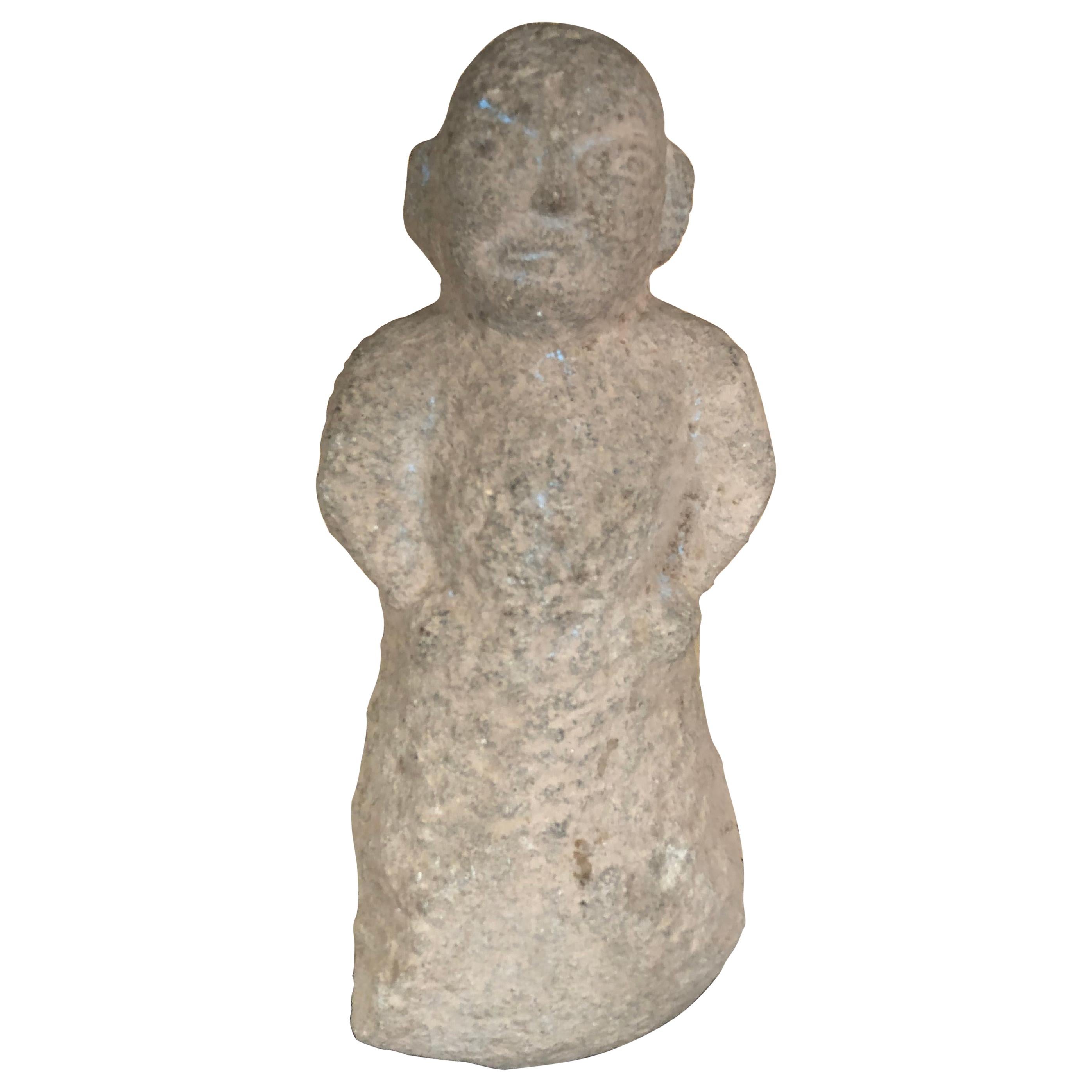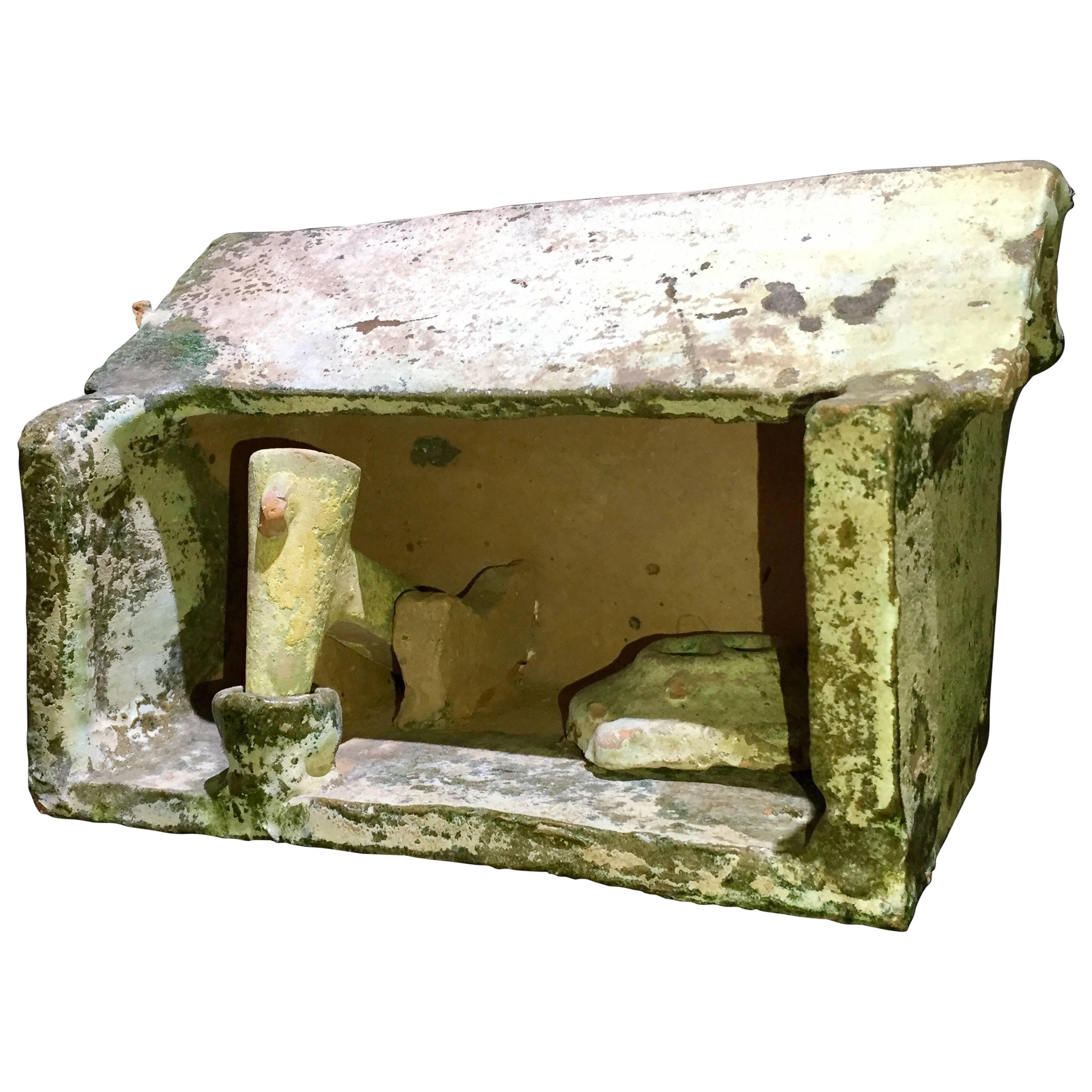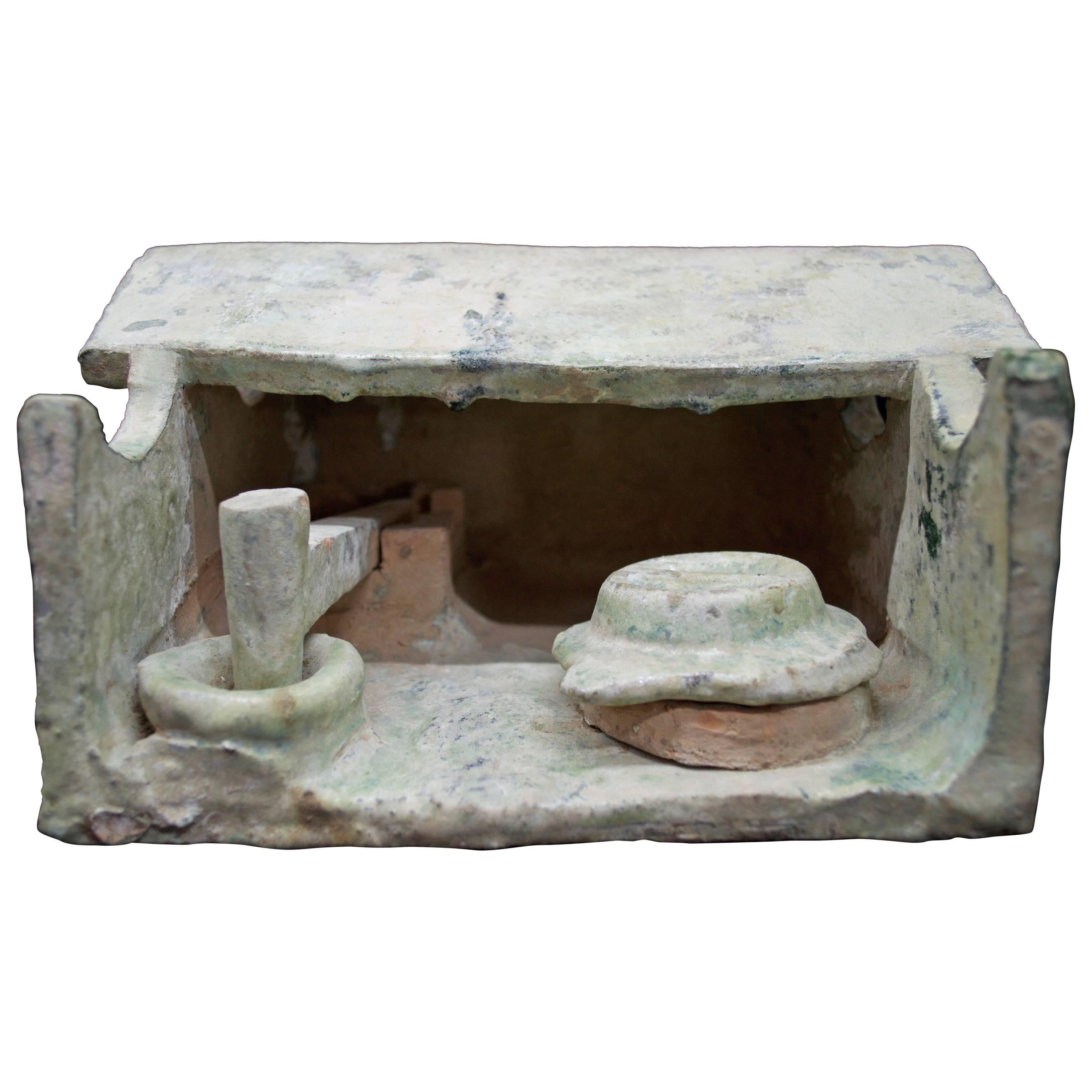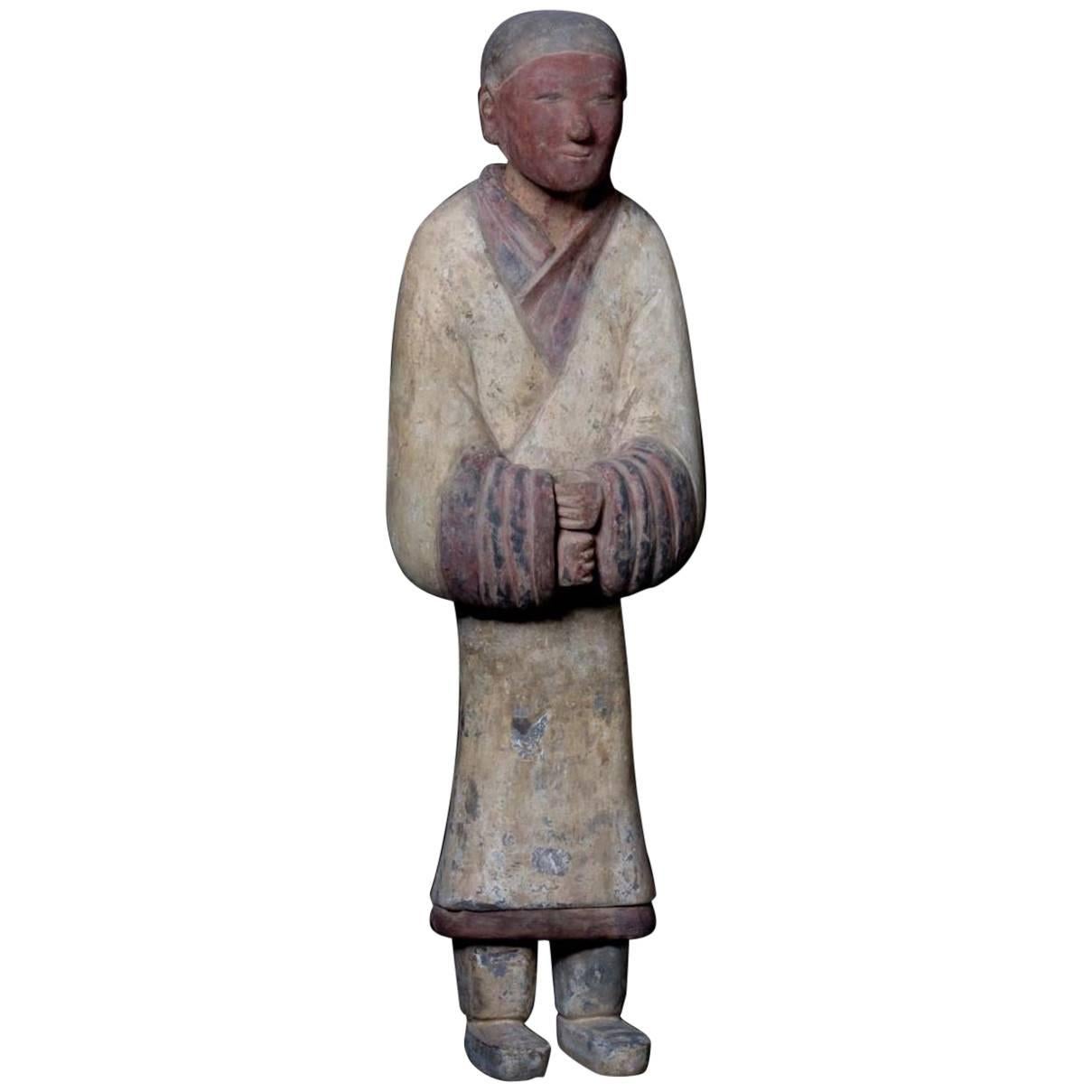Items Similar to Important Chinese Ancient Bronze Money Tree, 25BC-220AD
Video Loading
Want more images or videos?
Request additional images or videos from the seller
1 of 22
Important Chinese Ancient Bronze Money Tree, 25BC-220AD
About the Item
China, Ancient Bronze “Money Tree” Yaoqian Shu with original pottery base, Han dynasty (25 BCE – 220 CE)
Dimensions: 155cm, 62 inches high
A sculpted terracotta pottery base in the form of a tortoise with attendants and inserted with five individual bronze pole segments with twenty four individual hanging bronze open work money “branches” attached in tiers, four per tier and topped with a figure of a bronze phoenix as apex most bearing varying degrees of malachite and azurite encrustation from ancient burial.
Important Description Details:
Pottery "tortoise" base: 14.5" high and 11" wide
Bronze sections:
7pcs pole bronze sections approximately 8" length each
1pc top "phoenix" bronze section approximately 7" high and 6" wide
20 pcs long bronze hanging wings approximately 10" long and 5" wide each
4 pcs short bronze hanging wings (near top) approximately 7" long and 4" wide each
Total 32 pcs with ancient green and blue azurite patina.
Catalog reference: Schneible Fine arts catalog - 35 Years Collecting Treasures- Number 11p. 28 (see photos)
Provenance: Provenance: Private family collection formerly exhibited “Asia Week” New York City, Fuller Building, Zabriskie Gallery, 2008.
History of money trees:
In the late Han Dynasty tombs of western China, money was created as heavenly offerings to grow on trees insuring that the deceased’ needs would be met in afterlife. Large money trees are made of two sections: a sculptural pottery base and a bronze tree, whose molded, open work branches are intricately decorated with coin motifs, mythological animals such as deer who are associated with the magic elixir, images of Xiwangmu (Queen Mother of the Western Paradise and holder of secret immortality) and other Daoist symbols and immortals such as monkeys who try to steal the elixir. Because of the extraordinarily fine, open-work bronze designs, few money trees have survived totally in tact.
Our research indicates that only a hundred or so exist in tact worldwide, primarily in institutional collections. Various complete money trees are known, but with few exceptions the elaborate bronze upper part, cast with numerous branches suspended with coins, is broken into numerous pieces. A complete one in good condition is illustrated by Rawson, Mysteries of Ancient China, p.177, No.87, which was excavated in Pengshan county, Sichuan province.
Our gallery has been dealing in authentic ancient Chinese and Japanese antiquities and garden ornaments for 25 years. Our president personally travels to the far east each year to meet his network partners who assist him in finding best examples. He personally inspects each antique work of art to ensure its old age, authenticity and quality condition.
Lifetime guarantee of authenticity: All of our Asian works of art come with our Lifetime Authenticity Guarantee.
- Dimensions:Height: 62 in (157.48 cm)Width: 26 in (66.04 cm)Depth: 26 in (66.04 cm)
- Style:Han (Of the Period)
- Materials and Techniques:
- Place of Origin:
- Period:
- Date of Manufacture:25BC- 220AD
- Condition:Wear consistent with age and use.
- Seller Location:South Burlington, VT
- Reference Number:1stDibs: LU128926649013
About the Seller
5.0
Platinum Seller
These expertly vetted sellers are 1stDibs' most experienced sellers and are rated highest by our customers.
Established in 1990
1stDibs seller since 2015
2,207 sales on 1stDibs
Typical response time: 1 hour
- ShippingRetrieving quote...Ships From: South Burlington, VT
- Return PolicyA return for this item may be initiated within 7 days of delivery.
More From This SellerView All
- Ancient China Monumental Stone Ram Han Dynasty, 206BC-220ADLocated in South Burlington, VTChina, a large votive model of a stone ram, Han dynasty (206BC-220AD) Dimensions: 45cm, 18 inches high and 65cm, 26 inches length and 25cm, 10 inches wi...Category
Antique 15th Century and Earlier Chinese Han Sculptures and Carvings
MaterialsLimestone
- Chinese Ancient Stone Male Figure, 206 BC-220 ADLocated in South Burlington, VTChina, a rare hand carved stone male figure from the Han dynasty (206 BCE-220 CE). Dimensions: 16 inches tall on its custom stand and and 6 inches wide Condition: old patina wi...Category
Antique 15th Century and Earlier Chinese Han Sculptures and Carvings
MaterialsTerracotta
- China Ancient Stone Entertainer, Han Dynasty 200 ADLocated in South Burlington, VTChina an ancient limestone figure of an Entertainer replete with hands holding tambourines and a top a drum, -for the afterlife- , Han dynasty 206 BC...Category
Antique 15th Century and Earlier Chinese Han Sculptures and Carvings
MaterialsLimestone
- Important Ancient Chinese Effigy Pug Dog, Ming Dynasty 1368-1644Located in South Burlington, VTChina, a carving of a canine “Pug”, Ming Dynasty, 1368-1644 CE Dimensions: 38 cm, 15” High Photographs taken indoors and out of doors for your viewing pleasure. The hand carved limestone beast shown on its haunches with naturalistic joyful expression and a well defined compact head, ears, noes, eyes, feet, and tail parted to one side on reverse with distinctive collar ornament seated four square on a thick base all-over showing a weathered surface from significant age. Formerly exhibited “Asia Week” New York City, Fuller Building, Hutton Gallery 2006. Provenance: ex collection luoyang, Henan Province, China. Includes custom display base as shown Catalog reference: 35 years collecting 35 treasures, Number 35, p.76 (photo) In ancient China, it is a well-known fact that several types of small dogs were bred and were favored pet gifts between emperors and kings including Lion Dogs, Pekingese and Lo-sze breeds. Some Lo-sze are pictured wearing collars with bells a frequent combination fancied by European royalty of the seventeenth and eighteenth centuries. Lo-sze or pugs were prized for their compact body, good bones, flat face, square jaw, short coat, curled tail, side set back ears, and temperate disposition. History: Placing stone animals in important tombs can be traced back at least to the Qin Dynasty (221-206 BCE), some two thousand years ago. In ancient times, stone animals and human figures placed before imperial tombs symbolized royal power and privilege in addition to decorative functions. The first Ming tomb...Category
Antique 15th Century and Earlier Chinese Ming Sculptures and Carvings
MaterialsLimestone
- Chinese Ancient Hand Carved UnicornLocated in South Burlington, VTA Chinese hand carved and hand painted wooden effigy of an extraordinary unicorn dating to the Song dynasty before 1279 AD. Please enjoy the beautiful remnants of its aged original swirling painted surfaces. Period: Song dynasty Dimensions: 16 inches high and 31 inches long and 4 inches deep Certificate of Age: Radiocarbon Test, GX-32990, 1223-1279 AD, 02/13/2008 (see photo of certificate) Provenance: This is from a private collection and were acquired by us along with a larger wooden horse...Category
Antique 15th Century and Earlier Chinese Antiquities
MaterialsWood
- Chinese Ancient Hand Carved Wood Lion GuardianLocated in South Burlington, VTA Chinese hand carved and hand painted wooden effigy of a fantastic Bixie dating to before Song dynasty 1279 AD. Please enjoy the beautiful remnants of its aged original swirling painted surfaces. It has been traditionally carved and assembled in three sections. The tail may be a later replacement. Period: Song dynasty Dimensions: 6 inches high and 15 inches wide About Bixie The “bixie” is a mythological creature commonly thought to be able to ward off evil forces with its magical powers. In fact, its name means “to ward off evil” in Chinese. In the Han dynasty, “bixie” were commonly represented as winged, four-legged beasts, a form that was probably transmitted from Western Asia. Provenance: This is from a private collection and were acquired by us along with a larger wooden horse...Category
Antique 15th Century and Earlier Chinese Antiquities
MaterialsWood
You May Also Like
- Eastern Han Dynasty Terracotta Model of a Paper Mill , China '206BC - 220AD'Located in San Pedro Garza Garcia, Nuevo LeonSlab pottery constructed Model of a Paper Mill, in Green and Cream Color Glazed Terracotta having a peaked roof – open walled form with a mechanical pounder and a large round storage container. Light blue-green mottled glazed surface with some iridescence patina to the glaze. The Iridescence is a refraction of the layers on the glass that produces multicolor hues & metallic luster, and only develops after one thousand years of being buried in the ground. An unquestionable mark of antiquity, impossible to falsify. Han Dynasty, dated 206 B.C-220 A.D. Condition: Excellent, wear commensurate with age, an unusual example. This fantastic piece is accompanied by a Certificate of Authenticity. Sculptural effigies of domesticated animals were often interred in the tombs of nobility and elite members of the social hierarchy. Models like this one were made to represent everything from simple goat or pig pens to the most elaborate towers and palaces. Because very few ancient Chinese buildings have survived intact, these models, along with descriptions from ancient texts, give a good representation of what the buildings might have looked like. Burial figurines of graceful dancers, mystical beasts, and everyday objects reveal both how people in early China approached death and how they lived. Since people viewed the afterlife as an extension of worldly life, these figurines, called mingqi, sometimes referred as “spirit utensils” or “vessels of ghosts” disclose details of routine existence and provide insights into belief systems over a thousand-year period. For the first time in Chinese history, we have images of rural and daily life during the Han in the form of contemporary records...Category
Antique 15th Century and Earlier Chinese Han Antiquities
MaterialsTerracotta
- Eastern Han Dynasty Terracotta Barn Workshop, China '206BC - 220AD' Ex-MuseumLocated in San Pedro Garza Garcia, Nuevo LeonSlab pottery constructed barn workshop having a peaked roof – open walled form with a mechanical pounder and a large round covered storage container. Light blue-green mottled glazed surface with some iridescence patina to the glaze. Condition: Intact, excellent condition, an unusual example. Provenance: The Living Torah Museum, Brooklyn; ex. Sands of Time, 2002. Sculptural effigies of domesticated animals were often interred in the tombs of nobility and elite members of the social hierarchy. Models like this one were made to represent everything from simple goat or pig pens to the most elaborate towers and palaces. Because very few ancient Chinese buildings have survived intact, these models, along with descriptions from ancient texts, give a good representation of what the buildings might have looked like. This fantastic piece is accompanied by a Certificate of Authenticity. Burial figurines of graceful dancers, mystical beasts, and everyday objects reveal both how people in early China approached death and how they lived. Since people viewed the afterlife as an extension of worldly life, these figurines, called mingqi, sometimes referred as “spirit utensils” or “vessels of ghosts” disclose details of routine existence and provide insights into belief systems over a thousand-year period. For the first time in Chinese history, we have images of rural and daily life during the Han in the form of contemporary...Category
Antique 15th Century and Earlier Chinese Han Antiquities
MaterialsTerracotta
- Elegant Han Dynasty Terracotta Warrior - China '206 BC - 220 AD'Located in San Pedro Garza Garcia, Nuevo LeonImpressive terracotta warrior representing a banner bearer gripping a wooden staff with his hands (dematerialized through the ages); his gaze is ser...Category
Antique 15th Century and Earlier Chinese Han Antiquities
MaterialsTerracotta
- Monumental Han Dynasty Terracotta Horse - TL Tested - China, '206 BC–220 AD'Located in San Pedro Garza Garcia, Nuevo LeonA massive pottery horse with separately made head and tail, standing on all fours and striding with its right hoof forward. Extended snout ends in parted lips showing teeth beneath i...Category
Antique 15th Century and Earlier Chinese Han Antiquities
MaterialsTerracotta
- A Han (206BC -220AD) Glazed Hu VesselLocated in Chicago, ILThis is a fine, heavily patinated example of a Han hu wine storage vessel, buried for the afterlife. The compressed globular body narrows to a slender waisted neck, covered with a da...Category
Antique 15th Century and Earlier Chinese Han Antiquities
MaterialsTerracotta
- Fanghu Han Dynasty 206BC-220AD Chinese Bronze Ritual Wine Vessel Jug & CoverLocated in GBWe are delighted to offer for sale this exceptionally important and highly collectable museum quality original Chinese bronze ritual wine vessel and...Category
Antique 15th Century and Earlier Chinese Han Antiquities
MaterialsBronze




